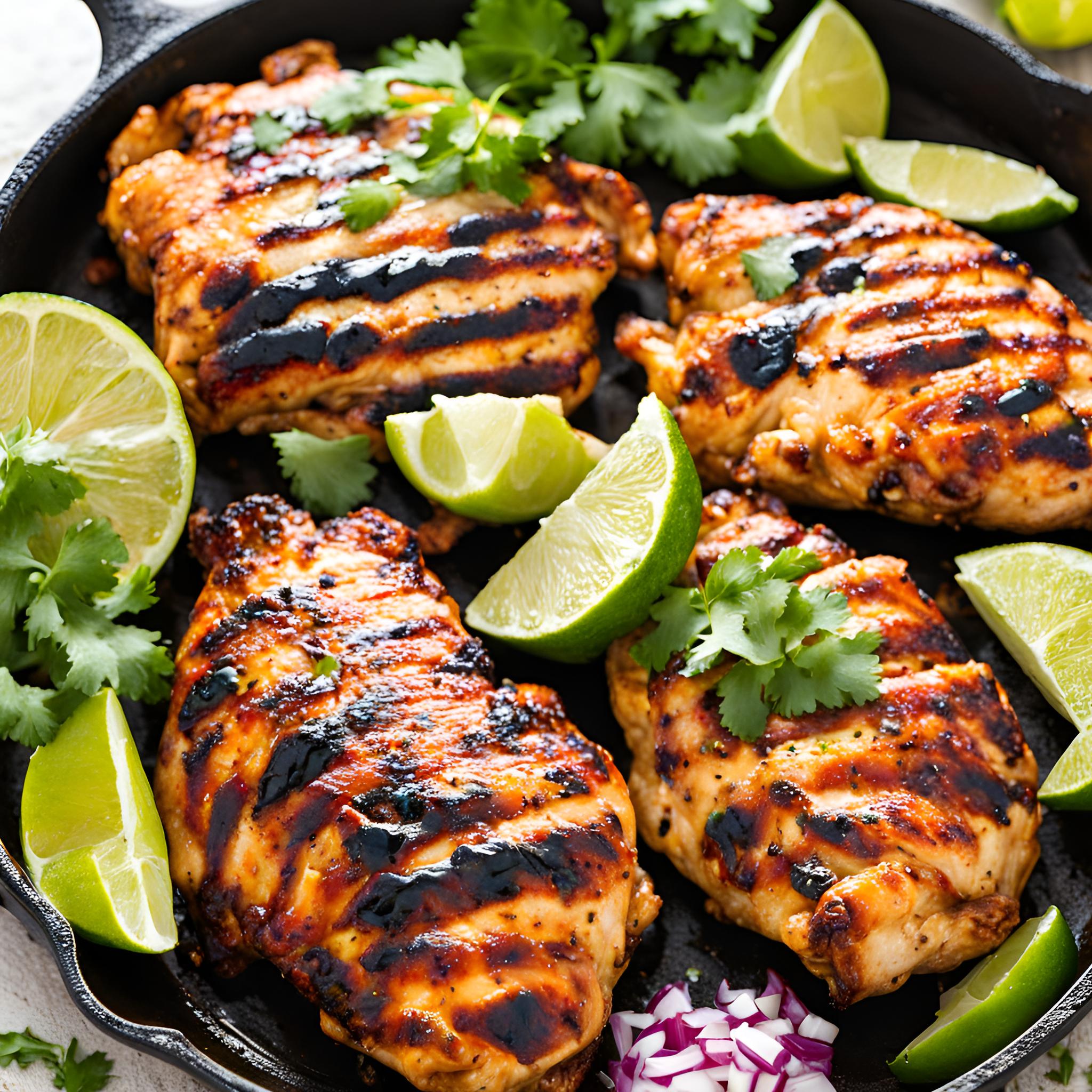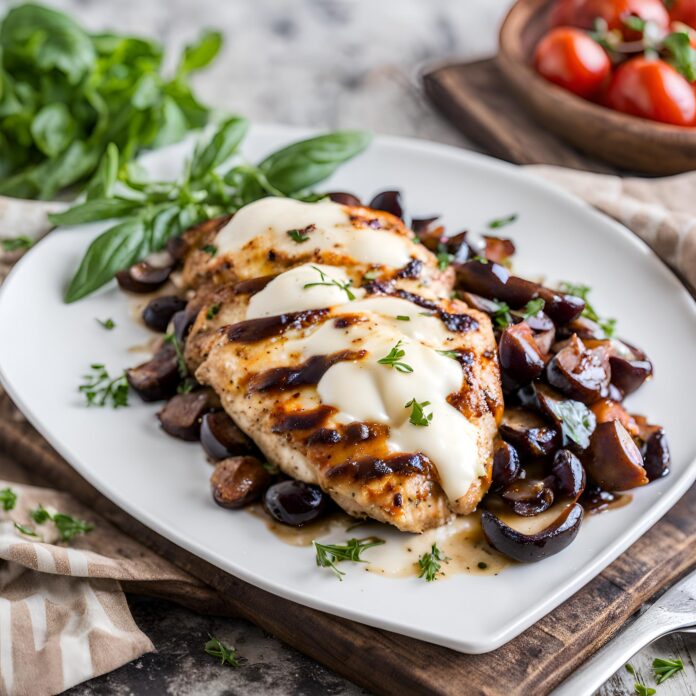Hawaiian Inspired Chicken Poke Bowl Recipe
The poke bowl is a quintessential dish from Hawaii that has taken the culinary world by storm. Traditionally made with raw fish, poke (pronounced poh-kay) means “to slice or cut” in Hawaiian. However, the beauty of the poke bowl lies in its versatility.

Today, variations featuring cooked proteins like chicken have become increasingly popular, catering to those who prefer cooked meats or simply want a different twist on this classic dish.
Our Hawaiian-inspired Chicken Poke Bowl is a vibrant, healthy, and delicious meal that brings the flavors of the islands straight to your table. Marinated chicken, fresh vegetables, and a zesty sauce come together over a bed of rice, creating a satisfying and wholesome dish. Whether you’re looking for a light lunch or a hearty dinner, this poke bowl is sure to please.
Preparing the Chicken Marinade
The marinade is what sets this poke bowl apart, giving the chicken a burst of flavor that complements the fresh ingredients in the bowl. Here’s how to prepare it:
- Combine the Ingredients: In a medium mixing bowl, whisk together 1/4 cup of soy sauce, 2 tablespoons of sesame oil, 2 tablespoons of rice vinegar, 2 tablespoons of honey, 3 cloves of minced garlic, and 1 tablespoon of freshly grated ginger. The soy sauce provides a salty, umami base, while the sesame oil adds a nutty richness. The rice vinegar and honey balance the flavors with acidity and sweetness, and the garlic and ginger bring a punch of aromatics.
- Taste and Adjust: Before adding the chicken, taste the marinade. It should have a balanced flavor with a good mix of saltiness, sweetness, acidity, and umami. If it’s too salty, add a bit more honey or a splash of water. If it’s too sweet, add a little more soy sauce or rice vinegar.
- Prepare the Chicken: Trim any excess fat from the chicken breasts or thighs and cut them into bite-sized cubes. This not only helps the chicken cook evenly but also makes it easier to eat in the poke bowl.
Marinating the Chicken
Marinating the chicken is crucial for infusing it with flavor and ensuring it stays tender during cooking. Here’s how to do it:
- Add the Chicken to the Marinade: Place the chicken cubes in a resealable plastic bag or a shallow dish. Pour the marinade over the chicken, making sure all pieces are well coated. Seal the bag or cover the dish with plastic wrap.
- Marinate in the Refrigerator: Place the chicken in the refrigerator and let it marinate for at least 30 minutes, though 2-4 hours is ideal. This allows the flavors to penetrate the chicken fully. Avoid marinating for more than 4 hours, as the acidity in the marinade can start to break down the chicken, leading to a mushy texture.
- Occasionally Turn the Chicken: If possible, turn the chicken occasionally during the marinating process to ensure even coating and flavor distribution.
Cooking the Chicken
Once the chicken is marinated, it’s time to cook it. Grilling or pan-searing are the best methods to achieve a flavorful, slightly charred exterior while keeping the chicken juicy inside.
- Grilling Method: Preheat your grill to medium-high heat. If using a charcoal grill, let the coals burn until they are covered with white ash. Brush the grill grates with a little oil to prevent sticking. Thread the marinated chicken onto skewers (if using wooden skewers, soak them in water for 30 minutes before grilling). Grill the chicken for 4-5 minutes on each side, or until it reaches an internal temperature of 165°F (75°C) and has a nice char.
- Pan-Seared Method: If you don’t have a grill, you can easily cook the chicken on the stovetop. Heat a large skillet or grill pan over medium-high heat and add a tablespoon of oil. Add the chicken cubes in a single layer, making sure not to overcrowd the pan. Cook for 4-5 minutes on each side, until the chicken is cooked through and has a golden-brown crust.
- Rest the Chicken: After cooking, remove the chicken from the heat and let it rest for a few minutes. This allows the juices to redistribute, making the chicken more tender and flavorful.
Assembling the Poke Bowl
Assembling the poke bowl is the fun part, where you can get creative with your toppings and presentation. Here’s how to do it:
- Prepare the Rice: Cook your rice according to the package instructions. Jasmine rice or sushi rice works best for poke bowls due to their slightly sticky texture. Once the rice is cooked, fluff it with a fork and let it cool slightly.
- Add the Base: Start by placing a generous scoop of rice into each bowl. The rice serves as the foundation for your poke bowl, so don’t skimp on it!
- Arrange the Chicken: Add the cooked chicken cubes on top of the rice, slightly off to one side. This creates a visual balance in the bowl and allows room for the other toppings.
- Add the Vegetables: Arrange your sliced vegetables around the chicken and rice. Thinly sliced cucumbers, radishes, and avocados are classic choices, but feel free to add whatever fresh vegetables you like. Edamame, shredded carrots, and pickled ginger are also great options.
- Drizzle with Sauce: A poke bowl wouldn’t be complete without a delicious sauce. Drizzle the chicken and vegetables with your choice of sauce. Spicy mayo (a mix of mayonnaise and sriracha) adds a creamy, spicy kick, while a ponzu sauce (a citrus-based soy sauce) provides a tangy, umami flavor.
- Garnish: Finish the bowl with a sprinkle of sesame seeds, chopped green onions, and nori strips. These garnishes add texture and an extra layer of flavor to your poke bowl.
- Serve Immediately: Poke bowls are best served fresh, so enjoy your creation right away!
Tips for Perfecting Your Poke Bowl
- Balance of Flavors: A great poke bowl has a balance of salty, sweet, tangy, and umami flavors. Taste as you go and adjust the seasoning in the marinade and sauce to achieve the perfect balance.
- Texture: Texture is just as important as flavor. Include a variety of textures in your poke bowl, from the soft, tender chicken to the crunchy vegetables and the creamy avocado.
- Fresh Ingredients: Use the freshest ingredients possible. Fresh vegetables and herbs will make a big difference in the flavor and overall appeal of your poke bowl.
- Rice Consistency: The rice should be slightly sticky but not mushy. Rinse the rice thoroughly before cooking to remove excess starch and ensure the perfect texture.
- Customizable: The beauty of a poke bowl is that it’s highly customizable. Feel free to add or substitute ingredients based on your personal preferences and what you have on hand.
Variations on the Recipe
- Spicy Chicken Poke Bowl: Add some heat to your bowl by increasing the amount of sriracha in the sauce or adding sliced jalapeños as a topping. You can also marinate the chicken with a bit of chili paste or cayenne pepper.
- Teriyaki Chicken Poke Bowl: For a sweeter flavor, marinate the chicken in a homemade or store-bought teriyaki sauce instead of the soy sauce-based marinade. Add grilled pineapple and extra sesame seeds for a tropical twist.
- Vegetarian Poke Bowl: Replace the chicken with marinated tofu or tempeh for a vegetarian version of this dish. The tofu can be grilled or pan-seared for a delicious plant-based protein option.
- Low-Carb Poke Bowl: Skip the rice and serve the chicken and vegetables over a bed of greens like spinach, arugula, or kale. You can also use cauliflower rice for a low-carb alternative.
Nutritional Information
Here’s an approximate nutritional breakdown for one serving of a Hawaiian-inspired Chicken Poke Bowl (based on a recipe serving four):
- Calories: 450-500 calories
- Protein: 30-35 grams
- Fat: 15-20 grams (depending on the amount of sesame oil and avocado used)
- Carbohydrates: 40-45 grams (mainly from the rice and vegetables)
- Fiber: 5-7 grams (from vegetables and avocado)
- Sugars: 5-8 grams (from honey and rice vinegar)
- Sodium: 800-1000 mg (depending on the amount of soy sauce and salt used)
Conclusion
The Hawaiian-inspired Chicken Poke Bowl is a delicious, healthy, and versatile dish that brings the vibrant flavors of the Pacific islands to your kitchen. With its combination of marinated chicken, fresh vegetables, and flavorful sauces, this poke bowl is both satisfying and nutritious. Whether you’re looking to recreate the taste of Hawaii at home or simply enjoy a light and balanced meal, this recipe is sure to become a favorite.
Experiment with different variations and customize your poke bowl to suit your tastes. The possibilities are endless, and with the tips provided, you can perfect your poke bowl-making skills in no time. Enjoy the fresh, vibrant flavors of this Hawaiian-inspired dish and savor the taste of the islands with every bite.
FAQs
- Can I make the poke bowl ahead of time? Yes, you can prepare the components of the poke bowl ahead of time, but it’s best to assemble it just before serving to keep the ingredients fresh and vibrant.
- How long does the marinated chicken last in the fridge? Marinated chicken can be stored in the refrigerator for up to 24 hours. If you need to marinate it longer, it’s best to freeze it and thaw it in the refrigerator before cooking.
- Can I use brown rice instead of white rice? Absolutely! Brown rice is a great alternative if you’re looking for a higher fiber, whole-grain option. It will add a slightly nutty flavor to your poke bowl.
- What other toppings can I add to my poke bowl? The possibilities are endless! You can add shredded cabbage, pickled jalapeños, seaweed salad, or even fruits like mango or pineapple for a sweet contrast.
- Is this recipe gluten-free? To make this recipe gluten-free, use tamari or a gluten-free soy sauce substitute in the marinade and sauce. Ensure that all other ingredients, such as rice vinegar and other sauces, are also gluten-free.
Hawaiian Inspired Chicken Poke Bowl Recipe

The poke bowl is a quintessential dish from Hawaii that has taken the culinary world by storm. Traditionally made with raw fish, poke (pronounced poh-kay) means "to slice or cut" in Hawaiian. However, the beauty of the poke bowl lies in its versatility. Today, variations featuring cooked proteins like chicken have become increasingly popular, catering to those who prefer cooked meats or simply want a different twist on this classic dish.
Ingredients
- For the spicy mayo:
- 4 tablespoons of light mayo
- 2 teaspoons of sriracha
- 1-2 tablespoon of water
- For the chicken:
- 600g of uncooked boneless skinless chicken thighs, trimmed of visible fat and diced
- 2 teaspoons of grated garlic
- 2 teaspoons of grated ginger
- 1 teaspoon of onion powder
- 3 tablespoons of soy sauce
- 3 tablespoons of maple syrup
- 1 tablespoon of shaoxing wine
- 1 tablespoon of tomato paste (puree)
- 100ml of pineapple juice (from a carton)
- 2 teaspoons of sriracha
- 2 teaspoons of sesame oil
- For the bowl:
- 640g of cooked jasmine rice or sushi rice
- 200g (7oz) of fresh pineapple, diced
- 1 cup of cooked edamame beans
- small red onion, halved and sliced thinly
- 1 carrot, julienned
- 140g of avocado, diced
- 3 spring onions, sliced (green part only)
- 2 baby cucumbers, halved and sliced
- 1 teaspoon of toasted sesame seeds
Instructions
- In a small bowl, mix together the light mayonnaise and sriracha. Add a little water until desired consistency is reached (for drizzling over your bowl). Set aside.
- In another small bowl, whisk together the soy sauce, maple syrup, Shaoxing wine, pineapple juice, tomato paste, sesame oil, and sriracha.
- Heat a large frying pan over medium-high heat and spray with low-calorie spray. Add the chicken, garlic, ginger, and onion powder. Fry, turning occasionally, until golden brown. Remove from the pan and set aside.
- Pour the sauce into the frying pan and heat until it just starts to bubble. Add the chicken back into the pan and let it continue to cook until the sauce reduces down and the chicken is caramelized, and the sauce becomes sticky in consistency.
- Build your poke bowl by adding cooked rice to a bowl. Reheat the rice if needed. Sprinkle the chicken with a pinch of sesame seeds. Add cucumber, pineapple, avocado, red onion, julienned carrot, cooked edamame, and sliced green onions.
- Drizzle the spicy mayo over the bowl and enjoy!



